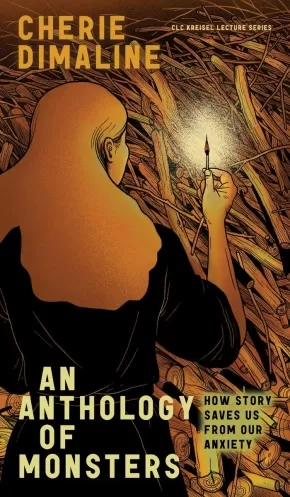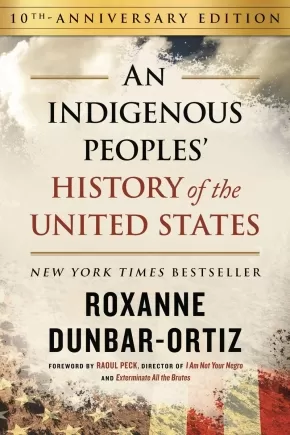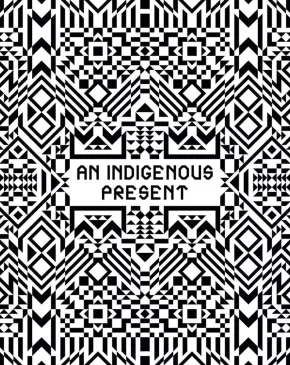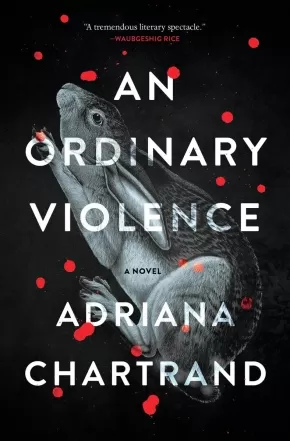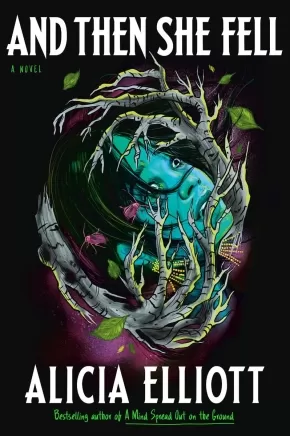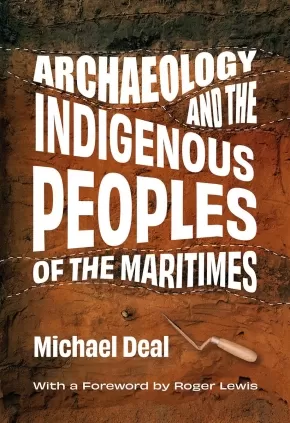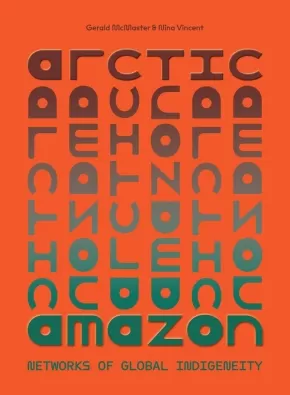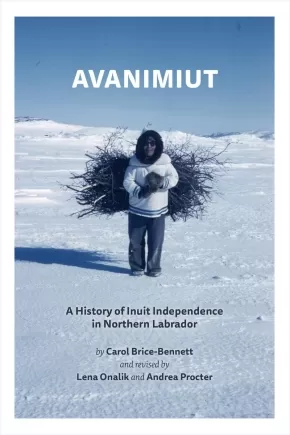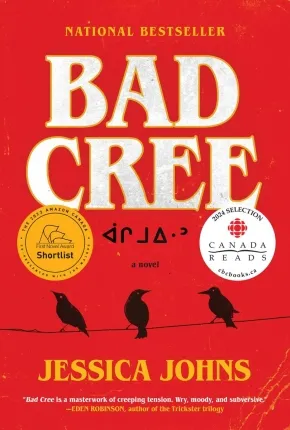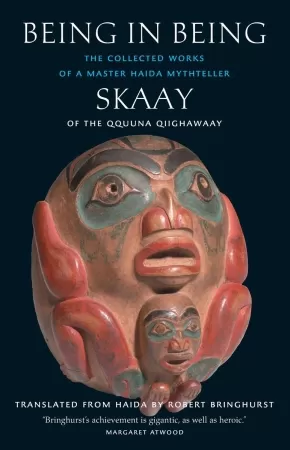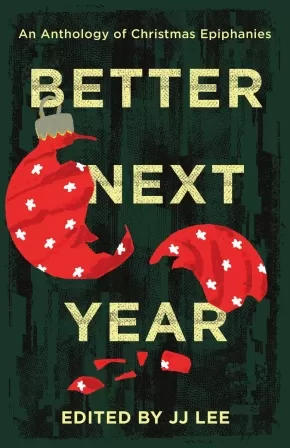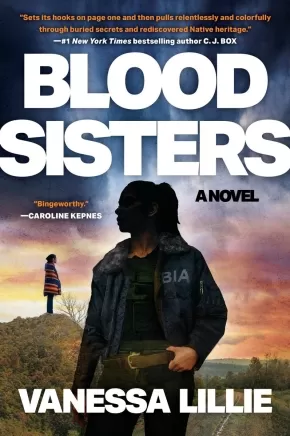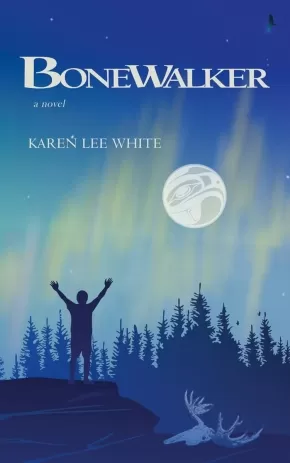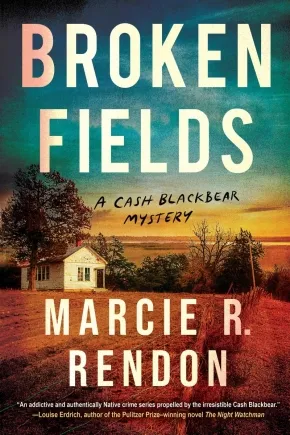
Indigenous Peoples
316
-
330
of
1343 Results;
Sort By
Go To
of 90
An Anthology of Monsters: How Story Saves Us from Our Anxiety
$14.99
Format:
Paperback
Text Content Territories:
Indigenous Canadian; Métis;
Grade Levels: 12; University/College;
ISBN / Barcode: 9781772126822
Synopsis:
Synopsis:
An Anthology of Monsters by Cherie Dimaline, award-winning Métis author of The Marrow Thieves, is the tale of an intricate dance with life-long anxiety. It is about how the stories we tell ourselves—both the excellent and the horrible—can help reshape the ways in which we think, cope, and ultimately survive. Using examples from her published and forthcoming books, from her mère, and from her own late-night worry sessions, Dimaline choreographs a deeply personal narrative about all the ways in which we cower and crush through stories. Witches emerge as figures of misfortune but also empowerment, and the fearsome Rougarou inspires obedience, but also belonging and responsibility. Dimaline reveals how to collect and curate these stories, how they elicit difficult and beautiful conversations, and how family and community is a place of refuge and strength.
Educator Information
Keywords / Subjects: Stories; Anxiety; Panic; Rougarou; Family; Community; Métis; Witches; Insomnia; Coping; Worries; Grandparents; Empower; Belonging; Responsibility; Mental Health; Biography; Essays; Canadian Literature
Additional Information
64 pages | 5.25" x 9.00" | Paperback
An Indigenous Peoples' History of the United States (10th Anniversary Edition)
$38.95
Format:
Hardcover
Text Content Territories:
Indigenous American;
Reading Level: N/A
ISBN / Barcode: 9780807013076
Synopsis:
Synopsis:
The first history of the United States told from the perspective of indigenous peoples
Today in the United States, there are more than five hundred federally recognized Indigenous nations comprising nearly three million people, descendants of the fifteen million Native people who once inhabited this land. The centuries-long genocidal program of the US settler-colonial regimen has largely been omitted from history. Now, for the first time, acclaimed historian and activist Roxanne Dunbar-Ortiz offers a history of the United States told from the perspective of Indigenous peoples and reveals how Native Americans, for centuries, actively resisted expansion of the US empire.
With growing support for movements such as the campaign to abolish Columbus Day and replace it with Indigenous Peoples’ Day and the Dakota Access Pipeline protest led by the Standing Rock Sioux Tribe, An Indigenous Peoples’ History of the United States is an essential resource providing historical threads that are crucial for understanding the present. In An Indigenous Peoples’ History of the United States, Dunbar-Ortiz adroitly challenges the founding myth of the United States and shows how policy against the Indigenous peoples was colonialist and designed to seize the territories of the original inhabitants, displacing or eliminating them. And as Dunbar-Ortiz reveals, this policy was praised in popular culture, through writers like James Fenimore Cooper and Walt Whitman, and in the highest offices of government and the military. Shockingly, as the genocidal policy reached its zenith under President Andrew Jackson, its ruthlessness was best articulated by US Army general Thomas S. Jesup, who, in 1836, wrote of the Seminoles: “The country can be rid of them only by exterminating them.”
Spanning more than four hundred years, this classic bottom-up peoples’ history radically reframes US history and explodes the silences that have haunted our national narrative.
An Indigenous Peoples' History of the United States is a 2015 PEN Oakland-Josephine Miles Award for Excellence in Literature.
Reviews
“Meticulously documented, this thought-provoking treatise is sure to generate discussion.”—Booklist
“What is fresh about the book is its comprehensiveness. Dunbar-Ortiz brings together every indictment of white Americans that has been cast upon them over time, and she does so by raising intelligent new questions about many of the current trends of academia, such as multiculturalism. Dunbar-Ortiz’s material succeeds, but will be eye-opening to those who have not previously encountered such a perspective.”—Publishers Weekly
"Roxanne Dunbar-Ortiz’s An Indigenous Peoples' History of the United States helped me clarify my place in this country. It confirmed what had been told to me by my ancestors: that Indigenous peoples, from the North Pole to the South, have been here since before the world was known as round. As a conquering nation, the United States has rewritten history to make people of the U.S. forget our past as natives to this land. This is especially apparent in the Mexi-phobic, immigrant-phobic policies of our time.
An Indigenous Peoples’ History of the United States (2014) helped me clarify my place in this country...This book is necessary reading if we are to move into a more humane future."—Sandra Cisneros, author of The House on Mango Street
“A must-read for anyone interested in the truth behind this nation’s founding.” —Veronica E. Velarde Tiller, PhD, Jicarilla Apache author, historian, and publisher of Tiller’s Guide to Indian Country
“This may well be the most important US history book you will read in your lifetime. . . . Dunbar-Ortiz radically reframes US history, destroying all foundation myths to reveal a brutal settler-colonial structure and ideology designed to cover its bloody tracks. Here, rendered in honest, often poetic words, is the story of those tracks and the people who survived—bloodied but unbowed. Spoiler alert: the colonial era is still here, and so are the Indians.”—Robin D. G. Kelley, author of Freedom Dreams
“Dunbar Ortiz’s . . . assessment and conclusions are necessary tools for all Indigenous peoples seeking to address and remedy the legacy of US colonial domination that continues to subvert Indigenous human rights in today’s globalized world.”—Mililani B. Trask, Native Hawai‘ian international law expert on Indigenous peoples’ rights and former Kia Aina (prime minister) of Ka La Hui Hawai‘i
Additional Information
328 pages | 6.38" x 9.30" | Hardcover
An Indigenous Present
$108.50
Artists:
Editors:
Format:
Hardcover
Text Content Territories:
Indigenous American; Indigenous Canadian;
Reading Level: N/A
ISBN / Barcode: 9781636811024
Synopsis:
Synopsis:
A monumental gathering of more than 60 contemporary artists, photographers, musicians, writers and more, showcasing diverse approaches to Indigenous concepts, forms and mediums
This landmark volume is a gathering of Native North American contemporary artists, musicians, filmmakers, choreographers, architects, writers, photographers, designers and more. Conceived by Jeffrey Gibson, a renowned artist of Mississippi Choctaw and Cherokee descent, An Indigenous Present presents an increasingly visible and expanding field of Indigenous creative practice. It centers individual practices, while acknowledging shared histories, to create a visual experience that foregrounds diverse approaches to concept, form and medium as well as connection, influence, conversation and collaboration. An Indigenous Present foregrounds transculturalism over affiliation and contemporaneity over outmoded categories.
Artists include: Neal Ambrose-Smith, Teresa Baker, Natalie Ball, Laakkuluk Williamson Bathory, Rebecca Belmore, Andrea Carlson, Nani Chacon, Raven Chacon, Dana Claxton, Melissa Cody, Chris T. Cornelius, Lewis deSoto, Beau Dick, Demian DineYazhi’, Wally Dion, Divide and Dissolve, Korina Emmerich, Ka’ila Farrell-Smith, Yatika Starr Fields, Nicholas Galanin, Raven Halfmoon, Elisa Harkins, Luzene Hill, Anna Hoover, Sky Hopinka, Chaz John, Emily Johnson, Brian Jungen, Brad Kahlhamer, Sonya Kelliher-Combs, Adam Khalil, Zack Kahlil, Kite, Layli Long Soldier, Erica Lord, Cannupa Hanska Luger, Tanya Lukin Linklater, James Luna, Dylan McLaughlin, Meryl McMaster, Caroline Monnet, Audie Murray, New Red Order, Jamie Okuma, Laura Ortman, Katherine "KP" Paul/Black Belt Eagle Scout, Postcommodity, Wendy Red Star, Eric-Paul Riege, Cara Romero, Sara Siestreem, Rose B. Simpson, Jaune Quick-to-See Smith, Hulleah J. Tsinhnahjinnie, Anna Tsouhlarakis, Arielle Twist, Marie Watt, Dyani White Hawk and Zoon a.k.a. Daniel Glen Monkman.
Additional Information
448 pages | 9.75" x 12.25" | 387 Illustrations | Hardcover
An Ordinary Violence: A Novel
$23.99
Format:
Paperback
Text Content Territories:
Indigenous Canadian;
Reading Level: N/A
ISBN / Barcode: 9781487011888
Synopsis:
Synopsis:
A chilling horror novel about a young Indigenous woman haunted by the oppressive legacies of colonization.
Dawn hasn't spoken to her brother, Cody, since he was sent to prison for a violent crime seven years ago. Now living in a shiny new Toronto condo, Dawn is haunted by uncanny occurrences, including cryptic messages from her dead mother, that have followed her most of her life. When the life Dawn thought she wanted implodes, she is forced to return to her childhood home and the prairie city that hold so much pain for her and her fractured family.
Cody is unexpectedly released from prison with a mysterious new friend by his side, who seems to be the charismatic leader of a dangerous supernatural network. Trying to uncover their plans, Dawn follows increasingly sinister leads until the lines between this world and the next, now and then, and right and wrong begin to blur and dissolve.
What unfolds is an eerie, incisive, and at times darkly funny horror novel about a young Indigenous woman reckoning with trauma and violence, loss and reclamation in an unsettling world where spirit realms entwine with the living-and where it is humans who carry out the truly monstrous acts.
Reviews
"Well written, creepy, frustrating, and puzzling. There may be violence in this novel, but there's nothing ordinary about it." — Drew Hayden Taylor, author of Take Us to Your Chief
"What a book! It's utterly enthralling and unsettling to your bones. A wonderful haunt that creeps into your psyche in the best possible way. I feel like I know Dawn, which only makes the story creepier. A tremendous debut, and I can't wait to read more."— Jesse Wente, author of Unreconciled: Family, Truth, and Indigenous Resistance
"An Ordinary Violence by Adriana Chartrand is a compelling read that rockets off the page. From the first chapter, I was hooked and gleefully followed Dawn as she moved around the spaces she used to call home to figure out her new reality. The writing is poetic, truthful, and you can tell that Adriana has written a story from her heart. This book will be sure to surprise its readers!" — Francine Cunningham, author of God Isn't Here Today
"An Ordinary Violence is surely a gripping and haunting novel, one that will hold you from the first word to the last, but what makes it so potent and memorable is the way Adriana Chartrand tells this story with such grace and humility. There is horror, and then there is horror-An Ordinary Violence has both. This is an unforgettable novel." — Morgan Talty, author of Night of the Living Rez
"Adriana Chartrand's An Ordinary Violence is a hallucinatory slow-burn chiller, sharply observed and heartfelt in its depiction of family ties that bind like strips of wet rawhide. Dawn returns to her hometown to find it is in the grip of something uncanny and malevolent. As she visits old friends and familiar places, she grapples with ghosts from the past and demons on the rise to save her struggling father, her wayward brother, and herself. With this fresh and fearsome look at the contemporary Indigenous experience, Chartrand emerges at the forefront of our newest literary voices." — David Demchuk, author of The Bone Mother and RED X
"An Ordinary Violence is a gripping debut novel that bewilders in the best way possible. Adriana Chartrand sparks a fire on the first page that steadily burns into a tremendous literary spectacle that transcends genre. I was riveted by the story and thoroughly impressed by the writing. This novel will stay with me for a long time." — Waubgeshig Rice, author of Moon of the Turning Leaves
"An unsettling, lyrical, slow-burn of a novel that combines the best elements of atmosphere and horror. Weaving together a history of violence with spirituality and the supernatural, Chartrand has achieved something special here, a cacophony of style and genre that displays the immeasurable potential of Indigenous storytelling." — David A. Robertson, author of The Theory of Crows
Additional Information
256 pages | 5.25" x 8.00"| Paperback
And Then She Fell: A Novel (HC) (6 in Stock)
$34.00
Format:
Hardcover
Text Content Territories:
Indigenous Canadian; First Nations; Haudenosaunee (Iroquois); Kanyen'keha:ka (Mohawk);
Reading Level: N/A
ISBN / Barcode: 9780385684101
Synopsis:
Synopsis:
A mind-bending, gripping novel about Native life, motherhood and mental health that follows a young Mohawk woman who discovers that the picture-perfect life she always hoped for may have horrifying consequences
On the surface, Alice is exactly where she should be: She’s just given birth to a beautiful baby girl, Dawn; her charming husband, Steve is nothing but supportive; and they’ve recently moved into a new home in a wealthy neighborhood in Toronto. But Alice could not feel like more of an imposter. She isn’t connecting with Dawn, a struggle made even more difficult by the recent loss of her own mother, and every waking moment is spent hiding her despair from their white, watchful neighbors. Even when she does have a minute to herself, her perpetual self-doubt hinders the one vestige of her old life she has left: her goal of writing a modern retelling of the Haudenosaunee creation story.
At first, Alice is convinced her discomfort is of her own making. She has gotten everything she always dreamed of, after all. But then strange things start happening. She finds herself losing bits of time, hearing voices she can’t explain, and speaking with things that should not be talking back to her, all while her neighbors’ passive-aggressive behavior begins to morph into something far more threatening. Though Steve assures her this is all in her head, Alice cannot fight the feeling that something is very, very wrong, and that in her creation story lies the key to her and Dawn’s survival. . . . She just has to finish it before it’s too late.
Told in Alice’s raw and darkly funny voice, And Then She Fell is an urgent and unflinching look at inherited trauma, womanhood, denial, and false allyship, which speeds to an unpredictable—and surreal—climax.
Reviews
"Familiar and ethereal. Brutal and beautiful. And Then She Fell is the fulfilment of the promise of Alicia Elliott ‘s storytelling prowess. . . . A soundtrack for the gorgeous nightmare that is both motherhood and belonging in and of itself, stitched together by the depths only grief and love can hook together. The Naked Lunch meets Rosemary’s Baby . . . and shot together with the golden humour and philosophy of Haudenosaunee story like an intimate lifeline, And Then She Fell is remarkable, and a world unto itself. What an accomplishment. What a gift.” —Cherie Dimaline, author of The Marrow Thieves and VenCo
"Alice and her husband have woven a lattice pattern of silence and secrets that slowly implodes in this fierce, remarkable debut. Elliott’s meticulous prose is an agile portal through the narrator’s complex inner life, the tensions, and fractures that surface when the trappings of success hide the weight of intergenerational trauma, racism, sexism, and the unwieldy expectations of Motherhood. And Then She Fell saves us from devastation by the grace it shows its characters and, ultimately, by the strength of their connections." —Eden Robinson, author of Monkey Beach and the Trickster trilogy
"And Then She Fell is an incredible and indelible novel. It's full of wonder and surprise, full of life and heart. This book is a gift that breathes life into the reader. Alicia Elliott has given us a knockout—a book so good you can't put it down." —Morgan Talty, author of Night of the Living Rez
"And Then She Fell is an unblinking look at the complex and often terrifying journey of new motherhood and what we're told we should want, with moving insights into connecting with our ancestors and our own identity. Alicia Elliott is a powerful storyteller, and this book is both suspenseful and heartfelt, with haunting elements that linger long after the final page is turned." —Vanessa Lillie, author of Little Voices and Blood Sisters
Awards
- Indigenous Voices Award winner
- Amazon First Novel Award winner
Educator Information
Psychological fiction
Additional Information
352 pages | 6.00" x 9.00" | Hardcover
Archaeology and the Indigenous Peoples of the Maritimes
$34.95
Format:
Paperback
Text Content Territories:
Indigenous Canadian; First Nations; Mi'kmaq;
Reading Level: N/A
ISBN / Barcode: 9781990445118
Synopsis:
Synopsis:
A retrospective look at the precontact period of the Maritimes, and how precontact cultures changed as they encountered neighbouring Indigenous peoples and European colonists.
In recent decades, the development of Indigenous Archaeology has prompted a shift in how non-Indigenous archaeologists approach the archaeological record, moving toward the inclusion of Indigenous reconstructions of precontact history communicated through oral tradition and traditional practices. Drawing mainly on research conducted since the late 1950s, this book surveys the historical perspective, theory, and methodology of maritime archaeology and offers insight on the lives of the Palaeo (Ancient), Archaic (Long Ago), and Woodland (Clay Pot) peoples. Looking to provide answers to where the earliest inhabitants of the Maritimes came from, what the area was like when they were there, and how they developed their technology and expanded their populations, Archaeology and the Indigenous Peoples of the Maritimes provides a retrospective look at the precontact period and how precontact cultures changed as they encountered neighbouring Indigenous peoples and finally European colonists.
Reviews
"Studies of Indigenous knowledge are challenging not only because of difficulties in cross-cultural communication and understanding but also because of their inevitable political dimensions…This publication serves to help narrow those gaps for future young Mi’kmaw scholars and academics. It also forms a valuable addition to the existing body of knowledge and will serve as a great resource to both Mi’kmaw and non-Mi’kmaw readers in the Atlantic Region." - Roger Lewis, Foreword
Additional Information
6.00" x 9.00" | Paperback
Arctic/Amazon: Networks of Global Indigeneity
$60.00
Editors:
Format:
Hardcover
Text Content Territories:
Indigenous Canadian; Indigenous South American;
Grade Levels: 12; University/College;
ISBN / Barcode: 9781773102993
Synopsis:
Synopsis:
Arctic/Amazon: Networks of Global Indigeneity offers a conversation between Indigenous Peoples of two regions in this time of political and environmental upheaval. Both regions are environmentally sensitive areas that have become hot spots in the debates circling around climate change and have long been contact zones between Indigenous Peoples and outsiders — zones of meeting and clashing, of contradictions and entanglement.
Opening with an Epistolary Exchange between the editors, Arctic/Amazon then widens to include essays by 12 Indigenous artists, curators, and knowledge-keepers about the integration of spirituality, ancestral respect, traditional knowledges, and political critique in artistic practice and more than 100 image reproductions and installation shots. The result is an extraordinary conversation about life, artistic practise, and geopolitical realities faced by Indigenous peoples in regions at risk.
Additional Information
256 pages | 8.87" x 12.12" | Hardcover
Avanimiut: A History of Inuit Independence in Northern Labrador
$29.95
Format:
Paperback
Text Content Territories:
Indigenous Canadian; Inuit; Labradormiut (Labrador Inuit);
Reading Level: N/A
ISBN / Barcode: 9781990445149
Synopsis:
Synopsis:
Called the Northlanders by the Moravian missionaries who sought to colonize them, Avanimiut were Inuit who maintained traditional lifeways, autonomy, and spiritual beliefs in northernmost Labrador. Despite the attempts of the Moravian Mission, the Hudson’s Bay Company, and the Anglican Church to bring them into their Christian and commercial trading worlds, the Avanimiut often held on to their independence. Avanimiut: A History of Inuit Independence in Northern Labrador is the story of a people often displaced by relocation who survived and thrived despite the hardships they faced.
The first version of Avanimiut, a 1996 report titled “Northlanders,” was commissioned by the Labrador Inuit Association and written by Carol Brice-Bennett. Lena Onalik and Andrea Procter have modified the original manuscript to incorporate historical Inuit writing and interviews, including the Inuit voices that had previously been almost entirely omitted. Avanimiut presents these voices alongside the colonial accounts of Inuit families who continued to live in their ancestral territories of Labrador, providing a glimpse into their lives, families, and relationships.
From the earliest interactions between Inuit and Europeans in Labrador to the final eviction of Inuit from their northern homeland, this book illustrates the dignified history of Avanimiut families and honours the strength, resilience, and survival of their ancestors in the north.
Additional Information
414 pages | 6.00" x 9.00" | Paperback
Bad Cree: A Novel
$24.99
Format:
Paperback
Text Content Territories:
Indigenous Canadian; First Nations; Cree (Nehiyawak);
Reading Level: N/A
ISBN / Barcode: 9781443465489
Synopsis:
Synopsis:
In this gripping, horror-laced debut, a young Cree woman’s dreams lead her on a perilous journey of self-discovery that ultimately forces her to confront the toll of a legacy of violence on her family, her community and the land they call home.
Mackenzie, a Cree millennial, wakes up in her one-bedroom Vancouver apartment clutching a pine bough she had been holding in her dream just moments earlier. When she blinks, it disappears. But she can still smell the sharp pine scent in the air, the nearest pine tree a thousand kilometres away in the far reaches of Treaty 8.
Mackenzie continues to accidentally bring back items from her dreams, dreams that are eerily similar to real memories of her older sister and Kokum before their untimely deaths. As Mackenzie’s life spirals into a living nightmare—crows are following her around and she’s getting texts from her dead sister on the other side—it becomes clear that these dreams have terrifying, real-life consequences. Desperate for help, Mackenzie returns to her mother, sister, cousin, and aunties in her small Alberta hometown. Together, they try to uncover what is haunting Mackenzie before something irrevocable happens to anyone else around her.
Haunting, fierce, an ode to female relations and the strength found in kinship, Bad Cree is a gripping, arresting debut by an unforgettable voice.
Reviews
"With creeps that are ever-creepy and love flowing like beer at a bush party, Bad Cree is a book about the power of dreams, home and family. It reads like a tribute to the ones who came before us Lee Maracle, Jeanette Armstrong, Eden Robinson. This book is tough iskwew in flannel shirts with long unbrushed hair, just looking good. It’s tea rings on Formica tables, cigarette smoke wafting through windows, and an eerie magical realism that only belongs to the bush. Full of Auntie power, Jessica Johns is really coming into her own immense storytelling ways." — Katherena Vermette, author of The Break and The Strangers
"Bad Cree is a masterwork of creeping tension. Wry, moody and subversive, Johns explores the power of connections, both the harm and the healing, with characters rich and warm, tangled in each other, to the land and to the supernatural. Couldn't put it down." — Eden Robinson, author of the Trickster trilogy
Additional Information
304 pages | 6.00" x 9.00" | Paperback
Beautiful Beautiful: A Novel
$24.95
Format:
Paperback
Text Content Territories:
Indigenous Canadian; First Nations; Heiltsuk (Bella Bella);
Reading Level: N/A
ISBN / Barcode: 9780889714540
Synopsis:
Synopsis:
Imbued with passion, creativity and insight, Brandon Reid’s debut novel is a wonderfully creative coming-of-age story exploring indigeneity, masculinity and cultural tradition.
Twelve-year-old Derik Mormin travels with his father and a family friend to Bella Bella for his grandfather’s funeral. Along the way, he uncovers the traumatic history of his ancestors, considers his relationship to masculinity and explores the contrast between rural and urban lifestyles in hopes of reconciling the seemingly unreconcilable, the beauty of each the Indigenous and “Western” way of life—hence beautiful beautiful.
He travails a storm, meets long-lost relatives, discovers his ancestral homeland; he suffers through catching fish, gains and loses companions, learns to heal trauma. In Beautiful Beautiful we delve into the mind of a gifted boy who struggles to find his role and persona through elusive circumstance, and—
All right, that’s quite enough third-person pandering; you’re not fooling anyone. Redbird here, Derik’s babysitter, and narrator of this here story. Make sure to smash that like button. We’re here to bring light to an otherwise grave subject, friends. It’s only natural to laugh while crying. I bring story to life. One minute I’m a songbird singing from a bough, the next, I’m rapture. I connect you to the realm of spirit… Well, as best I can, given your mundane allocation.
Follow us through primordial visions, dance with a cannibal (don’t worry, they’re friendly once tamed) and discover what it takes to be united. Together, we’ll have fun. Together, we are one. So tuck in, and believe what you’ll believe, for who knows what yesterday brings. Amen and all my relations, all my relations and amen.
Reviews
“Beautiful Beautiful is a fitting title for Brandon Reid's novel, for it describes the work itself—it's simply beautiful. Reid manages to capture hypnotic traditional storytelling in written form—by stretching, manipulating and breaking traditional rules and conventions of the English language. Reid draws us into the tormentous but stunning world of a boy who, while young in years, is an ancient soul. Through brilliant description, mind-blowing shifting of perspective and a brilliant use of the boy's internal voice, we join the daily toils of a Heiltsuk family as they struggle to live off the capricious bounty of the Pacific Ocean. Like Omar El Akkad’s What Strange Paradise, Beautiful Beautiful stakes out new ground in the literary scene.”— Darrel J. McLeod, author of A Season in Chezgh’un
Additional Information
336 pages | 5.50" x 8.50" | Paperback
Being in Being: The Collected Works of a Master Haida Mythteller
$29.95
Format:
Paperback
Text Content Territories:
Indigenous Canadian; First Nations; Haida;
Reading Level: N/A
ISBN / Barcode: 9781771623759
Synopsis:
Synopsis:
Being in Being contains three masterpieces by legendary Haida mythteller Skaay of the Qquuna Qiighawaay. The shortest recounts the high points of the legend of his family. The second, Raven Travelling, is the longest and most complex version of the story of the Raven ever recorded on the Northwest Coast. The third is The Qquuna Cycle, a narrative poem of nearly 5,500 lines, one of the true masterpieces of North American literature. Robert Bringhurst’s eloquent and vivid translations of these works are supplemented by explanatory notes that supply the needed background information.
Additional Information
384 pages | 5.50" x 8.50" | Paperback
Better Next Year: An Anthology of Christmas Epiphanies
$24.95
Editors:
● JJ Lee
Format:
Paperback
Text Content Territories:
Indigenous Canadian;
Reading Level: N/A
ISBN / Barcode: 9781990160271
Synopsis:
Synopsis:
Christmas is trumpeted as a time of peace, joy, bounty and goodwill. Believers and non-believers alike covet the spirit of the holidays even when circumstances are screwed up.
Recollections from acclaimed Canadian authors combine with emerging voices from across the country in an anthology that debunks the popular depiction of Christmas while delivering its messages of hope and renewal.
Writers of colour, immigrants, Indigenous authors, members of the queer and transgendered community and those marginalized by personal circumstance share memories of surviving bleak Christmases past: holidays spent in shelters, prisons or on the streets; families marred by alcohol and violence; personal struggles with addiction, poverty or grief; isolation and loneliness. Despite these and other obstacles, contributors strive to salvage the spirit of the season.
With contributions from:
- Tolu Oloruntoba, winner of the Governor-General’s Award and Griffin Prize for poetry
- Sonja Larsen, winner of the Edna Staebler Award for creative non-fiction
- JJ Lee, shortlisted for the Governor General, Hilary Weston and Charles Taylor prizes for non-fiction
- Joseph Kakwinokanasum, named a Rising Star by The Writers Union of Canada
Educator Information
Some but limited Indigenous content; it's up to readers to determine if this will work as an authentic resource for their purposes.
Additional Information
260 pages | 5.50" x 8.50" | Paperback
Blood Sisters (HC) (4 in Stock)
$37.00
Format:
Hardcover
Text Content Territories:
Indigenous American; Native American; Cherokee;
Reading Level: N/A
ISBN / Barcode: 9780593550113
Synopsis:
Synopsis:
A visceral and compelling mystery about a Cherokee archeologist for the Bureau of Indian Affairs who is summoned to rural Oklahoma to investigate the disappearance of two women…one of them her sister.
There are secrets in the land.
As an archeologist for the Bureau of Indian Affairs, Syd Walker spends her days in Rhode Island trying to protect the land's indigenous past, even as she’s escaping her own.
While Syd is dedicated to her job, she’s haunted by a night of violence she barely escaped in her Oklahoma hometown fifteen years ago. Though she swore she’d never go back, the past comes calling.
When a skull is found near the crime scene of her youth, just as her sister, Emma Lou, vanishes, Syd knows she must return home. She refuses to let her sister's disappearance, or the remains, go ignored—as so often happens in cases of missing Native women.
But not everyone is glad to have Syd home, and she can feel the crosshairs on her. Still, the deeper Syd digs, the more she uncovers about a string of missing indigenous women cases going back decades. To save her sister, she must expose a darkness in the town that no one wants to face—not even Syd.
The truth will be unearthed.
Reviews
“Blood Sisters sets its hooks on page one and then pulls relentlessly and colorfully through buried secrets and rediscovered Native heritage.”— C. J. Box, #1 New York Times bestselling author of Storm Front
"Vanessa Lillie’s riveting thriller explores the elusiveness of truth, and the history that binds people together—and to a place—no matter the time or the distance. At once captivating and illuminating, surprising and powerful, Blood Sisters is a story that resonates."—Megan Miranda, New York Times bestselling author of All the Missing Girls
“Combines pulse-pounding action with Cherokee myth and customs. I loved Syd Walker, a compelling new character who’s dealing with her own disturbing family history while trying to unravel the disappearance of several Native women. I hope we’ll see more of Syd Walker soon!” —David Heska Wanbli Weiden, award-winning author of Winter Counts
“This suspenseful mystery will not only captivate you, but it may just teach you something about Cherokee history, land rights and the plague of missing and murdered Indigenous women. Including queer and Two-Spirit characters, Blood Sisters is a meaningful and compelling thriller.” —Ms. Magazine
Additional Information
384 pages | 6.21" x 9.29" | Hardcover
Bonewalker: A Novel
$28.95
Format:
Paperback
Text Content Territories:
Indigenous;
Reading Level: N/A
ISBN / Barcode: 9781990773228
Synopsis:
Synopsis:
Krie Redsky is an extraordinary Indigenous child who has both a curse and blessing that allows him to walk between this world and the Spirit Realm. He is also at an age where he is learning to cope with the twists and turns of friendships, the awkwardness of first love, and the self-doubt that must be overcome following loss and betrayal. But, nurtured by Knowledge Keepers as “one who is without fear, and with the ability to cross realities,” he is soon recognized as an individual who can – and will – battle the terrifying ancient spirit stealers known as Bonewalkers. But is he strong enough for what is to come?
Additional Information
236 pages | 5.50" x 8.50" | Paperback
Broken Fields
$38.95
Format:
Hardcover
Text Content Territories:
Indigenous American; Native American; Anishinaabeg; Ojibwe (Chippewa);
Reading Level: N/A
ISBN / Barcode: 9781641296588
Synopsis:
Synopsis:
Cash Blackbear, a young Ojibwe woman and occasional sleuth, is back on the case after a man is found dead on a rural Minnesota farm in the next installment of the acclaimed Native crime series.
Minnesota, 1970s: It’s spring in the Red River Valley and Cash Blackbear is doing fieldwork for a local farmer—until she finds him dead on the kitchen floor of the property’s rented farmhouse. The tenant, a Native field laborer, and his wife are nowhere to be found, but Cash discovers their young daughter, Shawnee, cowering under a bed. The girl, a possible witness to the killing, is too terrified to speak.
In the wake of the murder, Cash can’t deny her intuitive abilities: she is suspicious of the farmer’s grieving widow, who offers to take in Shawnee temporarily. While Cash is scouring White Earth Reservation for Shawnee’s missing mother—whom Cash wants to find before the girl is put in the foster system—another body turns up. Concerned by the escalating threat, Cash races against the clock to figure out the truth of what happened in the farmhouse.
Broken Fields is a compelling, atmospheric read woven with details of American Indian life in northern Minnesota, abusive farm labor practices and women’s liberation.
Reviews
“A tragic, unforgiving crime novel that emphasizes the perils of the foster care system for Indigenous children.”—Library Journal, Starred Review
“Peyton Place meets Fargo in this clipped tale of misdoings in the Red River Valley . . . Rendon explor[es] the ways the deck is stacked against Cash because she’s a woman, an Ojibwe, and a maverick with limited respect for white men’s rules.”—Kirkus Reviews
“Rendon excels at balancing plot and character, taking time to probe Cash’s psychology while orchestrating a deliciously complicated mystery for her to solve. Readers will be rapt.”—Publishers Weekly
“Outstanding . . . Rendon delivers lots of suspense; a resourceful, rural community-smart heroine in Cash; and wrenching insights into the overt and covert racism endured by Indigenous people.”—Booklist
Series Information
This is the fourth book in the Cash Blackbear Mystery series from author Marcie Rendon.
Additional Information
272 pages | 5.83" x 8.60" | Hardcover
Sort By
Go To
of 90

